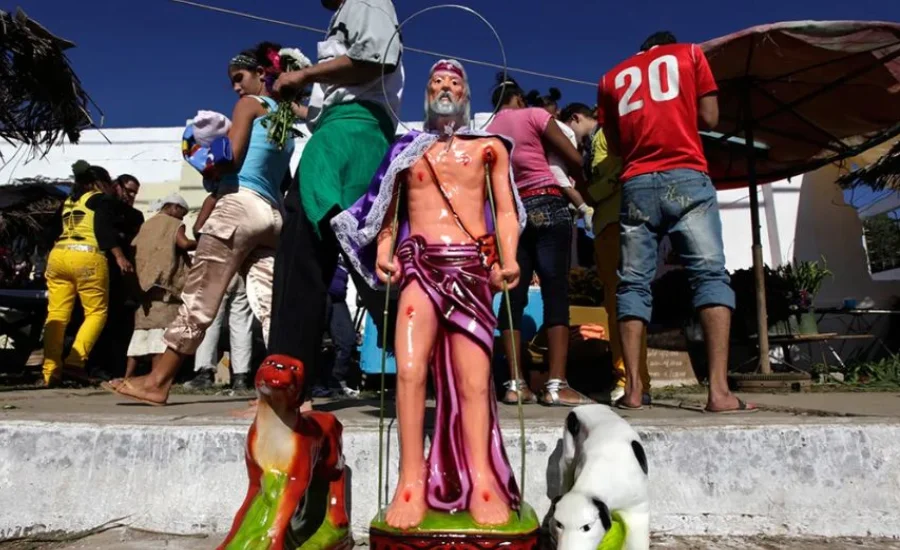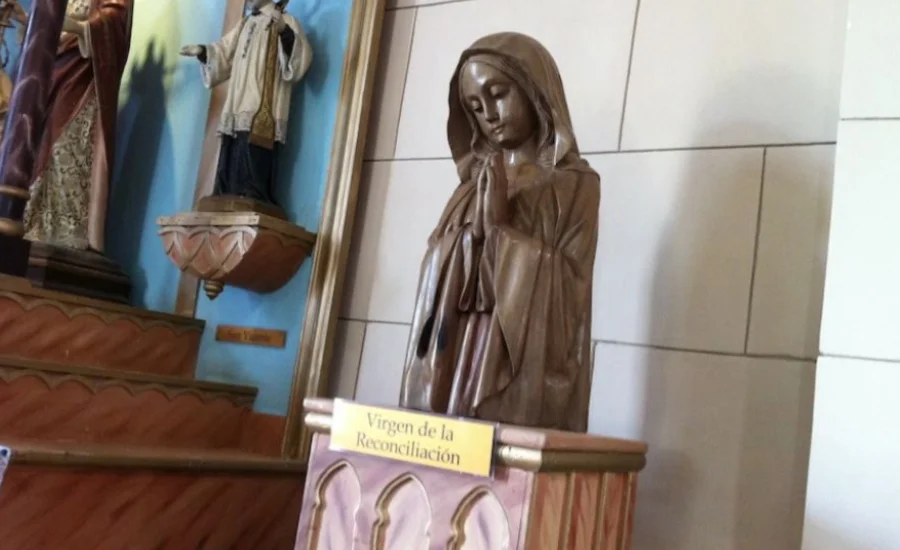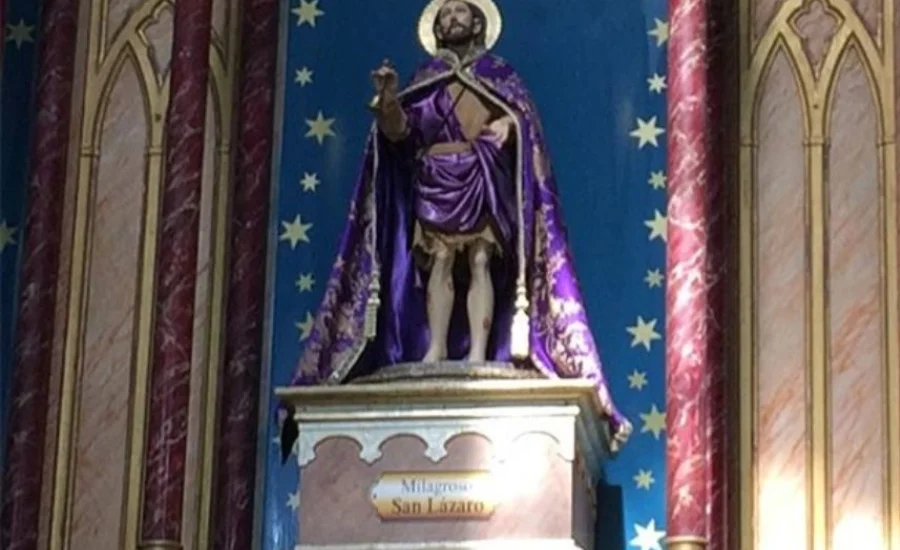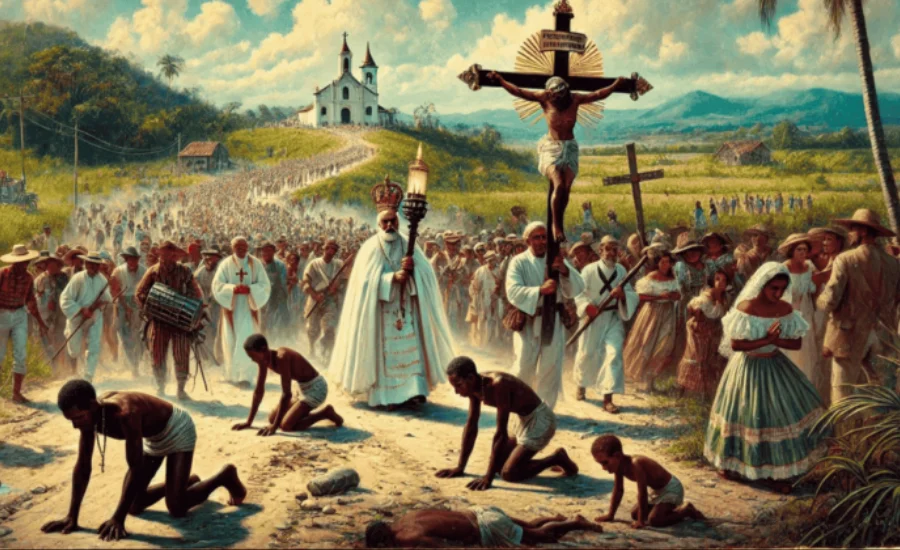St Lazarus Abba Qui Cuban In the vibrant spiritual landscape of Cuba, few figures command as much reverence as St. Lazarus Abba Qui, also honored as Babalu Aye in the Afro-Cuban religion of Santería. This powerful figure represents a unique blend of Catholic and Yoruba spiritual traditions, symbolizing both healing and hope. His role in Cuban culture reflects the deep syncretism of religious beliefs that have shaped the island’s identity. This article delves into the profound cultural and spiritual impact of St. Lazarus Abba Qui, highlighting his lasting influence both within Cuba and around the world.
The Syncretic Symbolism of St Lazarus Abba Qui Cuban Spirituality
In Christian teachings, Lazarus is known for his resurrection by Jesus, a powerful symbol of renewal and hope. In St Lazarus Abba Qui Cuban spirituality, this biblical figure is intertwined with the Yoruba deity Babalu Aye, who governs healing, particularly for ailments of the skin and bones. This blending of Catholic and Yoruba traditions creates the unique figure of St. Lazarus Abba Qui, where the boundaries between saint and orisha dissolve. In Cuba, this figure holds deep spiritual significance, embodying both the Catholic narrative of resurrection and the Yoruba focus on healing and protection.
Cuba’s Devotion to St. Lazarus: A Feast of Faith and Tradition
Every year on December 17th, St Lazarus Abba Qui Cuban comes alive in celebration of St. Lazarus, a deeply spiritual occasion that extends beyond religious observance. Thousands of worshippers make the pilgrimage to El Rincón, many on their hands and knees, while others leave flowers and light candles at the saint’s shrine. These gestures represent a profound connection to both spiritual faith and cultural heritage, reinforcing the bonds of community.
St. Lazarus is honored through a variety of rituals that reflect the blending of Catholic and Afro-Cuban spiritual practices. Devotees create home altars adorned with candles, flowers, and food, seeking the saint’s protection and healing. On his feast day, rituals often include animal sacrifices and traditional dances, echoing the African roots of Santería and highlighting the richness of Cuban spirituality.
The Revered St. Lazarus: A Symbol of Healing and Hope in Cuban Culture

St. Lazarus, known as Abba Kwi in St Lazarus Abba Qui Cuban culture, stands as a powerful figure in both Afro-Cuban spirituality and Catholicism. He embodies healing, protection, and hope, especially for those facing illness or adversity. His followers believe in his miraculous powers, often turning to him in moments of need.
Across Cuba, St. Lazarus is a familiar presence, with statues and altars dedicated to him in homes and public spaces, often adorned with flowers as symbols of devotion. The rituals that honor him are a blend of African spiritual traditions and Catholic practices, reflecting Cuba’s rich cultural tapestry. His influence reaches its peak on December 17, during his feast day, when a massive pilgrimage to El Rincón takes place, highlighting his enduring role in uniting communities and reinforcing his significance in Cuban society.
Abba Kwi’s Economic Legacy in St. Lazarus
Abba Kwi’s initiatives have brought transformative economic changes to St. Lazarus, creating new job opportunities and improving the quality of life for residents. His focus on infrastructure development has been a key driver of growth, enhancing not only the local economy but also fostering a stronger sense of community. By stimulating local markets and encouraging the rise of small businesses, his efforts have empowered residents and promoted community-based entrepreneurship.
Even after his departure, the lasting effects of Abba Kwi’s work will continue to uplift the people of St. Lazarus, ensuring sustained economic progress for years to come.
The Symbolism of Dogs in the Representation of St. Lazarus Abba Qui
A distinctive feature of St. Lazarus Abba Qui’s portrayal inSt Lazarus Abba Qui Cuban spirituality is his association with dogs. In Afro-Cuban religious traditions, where he is often linked to Babalu Aye, St. Lazarus is frequently depicted with two loyal dogs at his side. This imagery carries profound meaning, representing loyalty, compassion, and the dignity of enduring hardship.
The presence of dogs is more than decorative; it holds significant cultural symbolism. These animals are seen as steadfast companions, remaining loyal through times of struggle and marginalization. They symbolize the idea that all individuals, regardless of their suffering or social standing, deserve empathy and respect—a theme deeply resonant in St Lazarus Abba Qui Cuban culture, where dogs are celebrated as symbols of loyalty and protection.
Moreover, the bond between St. Lazarus and his dogs conveys a broader message about society: that the weak, the oppressed, and the marginalized possess inherent worth and deserve to be treated with dignity and care. This symbolism enriches the understanding of St. Lazarus Abba Qui, not only as a healer but also as a protector of those who suffer. Through this imagery, he embodies a message of trust and humanity, advocating for the dignity and compassion of every individual.
The Syncretic Worship of St. Lazarus in Cuban Culture
The veneration of St. Lazarus in St Lazarus Abba Qui Cuban culture represents a remarkable example of spiritual syncretism, where diverse religious traditions merge to form a unique and cohesive practice. This blending is particularly evident in the fusion of Catholic devotion to St. Lazarus with the Santería worship of Babalu Aye. This combination not only demonstrates the resilience of religious practices but also adds a rich layer to the spiritual experiences of many Cubans.
In this syncretic tradition, the Catholic image of St. Lazarus—depicted as an elderly, frail figure—contrasts with Santería’s portrayal of Babalu Aye. Catholic representations often show St. Lazarus in a state of suffering, reflecting his biblical story of hardship and miraculous healing. In contrast, Santería altars depict Babalu Aye dressed in simple burlap, marked by sores, and often leaning on crutches. This depiction emphasizes his role as a deity of healing and protection, deeply connected to those enduring illness and hardship.
St. Lazarus Abba Qui: A Symbol of Humility and Reverence
St. Lazarus Abba Qui is deeply revered for his association with humility and respect, virtues central to his worship. Devotees approach him with sincere hearts, seeking his help or blessings, believing that genuine humility will be rewarded with divine favor. This focus on humility is not unique to St. Lazarus but is a core theme in both Santería and Catholicism. In these traditions, engaging with the divine requires purity of heart and authenticity of intention.
This principle highlights the importance of approaching spiritual practices with reverence and true devotion, aligning one’s actions with the values of humility and gratitude.
St Lazarus Abba Qui Cuban Enduring Influence on Culture

The influence of St. Lazarus Abba Qui is far-reaching, extending beyond the realm of religious devotion and shaping the cultural and social identity of Cuba in profound ways. He is not merely a figure of worship but a symbol of the Cuban people’s resilience, hope, and unwavering faith in the face of adversity. His significance in Cuban spirituality is deeply intertwined with the nation’s historical struggles, social challenges, and the enduring spirit of its people.
In times of hardship, whether personal or communal, Cubans have consistently turned to St. Lazarus for guidance and comfort. His role goes beyond that of a healer or intercessor. To many, St. Lazarus represents a beacon of emotional and psychological support. He is a figure who, through his own narrative of suffering and recovery, resonates deeply with those who seek strength during difficult times. His story of enduring illness and miraculous healing reflects the hardships that many St Lazarus Abba Qui Cuban face, making him a powerful symbol of survival and perseverance.
Devotees believe that their sincere prayers and acts of devotion to St. Lazarus can bring about not only physical healing but also mental and emotional resilience. His feast day, celebrated on December 17th, is one of the most significant religious events in Cuba, drawing thousands of pilgrims to El Rincón. This pilgrimage, where many devotees walk long distances—some even crawling on their hands and knees to show their gratitude or ask for blessings—reflects the deep emotional and spiritual connection the St Lazarus Abba Qui Cuban people share with St. Lazarus. This journey is more than a religious ritual; it is an expression of hope, faith, and the collective will to endure.
Beyond religious observance, St. Lazarus’s influence pervades the cultural fabric of Cuban life. His image, often portrayed as a humble, frail figure with sores, accompanied by loyal dogs, is seen not only in churches and shrines but also in homes, streets, and marketplaces. Statues, altars, and offerings dedicated to him are a common sight throughout the country, symbolizing his omnipresence in everyday Cuban life. The rituals surrounding his worship, which blend Catholic and Afro-Cuban spiritual practices, further demonstrate how his figure bridges different aspects of Cuban identity. This syncretism is a reflection of the nation’s cultural diversity, where African traditions brought by enslaved peoples blend with Spanish Catholicism, creating a unique spiritual landscape.
In addition to his religious significance, St. Lazarus represents a cultural icon who embodies the ideals of humility, compassion, and perseverance. His association with the marginalized and the suffering makes him a patron not only of the sick but also of the poor, the downtrodden, and the overlooked. In a country where poverty and struggle have been prevalent throughout history, St. Lazarus’s narrative of enduring and overcoming hardship resonates strongly with the Cuban people. His worship is a reminder that strength can be found in vulnerability and that hope persists even in the face of overwhelming odds.
Moreover, St. Lazarus’s role in St Lazarus Abba Qui Cuban society serves as a source of unity. His feast day and the widespread devotion to him bring people together, reinforcing communal bonds and shared values. The act of pilgrimage, the building of altars, and the lighting of candles are collective expressions of faith that transcend individual suffering, transforming it into a shared cultural experience. These practices strengthen the sense of community, as people from all walks of life come together in mutual support and reverence.
The veneration of St. Lazarus reaches well beyond Cuba’s boundaries, since individuals who have left the island preserve their devotion in the Cuban diaspora. His persona and the customs that surround him act as a link to the motherland, preserving the spiritual and cultural bonds. In this sense, St. Lazarus’s impact transcends St Lazarus Abba Qui Cuban and is seen by Cubans worldwide as a source of hope and fortitude.
Celebrating St. Lazarus: A Cultural and Spiritual Extravaganza

The Feast Day of St. Lazarus stands out as a significant social and spiritual event in Cuba, transcending mere religious observance. This annual celebration is a vibrant tapestry of cultural expressions, including music, dance, culinary delights, and communal gatherings. It offers Cubans a unique opportunity to reconnect with their heritage, celebrate their faith, and honor the enduring spirit of resilience and hope that St. Lazarus represents.
As the day unfolds, the streets come alive with energetic activities, drawing people from diverse backgrounds to pay tribute to St. Lazarus. This vibrant atmosphere not only strengthens emotional and cultural bonds but also serves as a platform for expressing gratitude and devotion. For many, the Feast Day becomes a moment to reflect on the teachings and virtues of St. Lazarus, fostering a sense of community and highlighting the profound impact of his legacy on St Lazarus Abba Qui Cuban society.
The celebrations encapsulate a rich blend of tradition and modernity, showcasing the dynamic nature of St Lazarus Abba Qui Cuban culture. From lively musical performances to traditional dances, the festivities create a space where the past and present intertwine. The shared experience of joy and reverence reinforces the communal spirit, allowing individuals to celebrate their collective strength and solidarity. Through these expressions, the Feast Day of St. Lazarus becomes a powerful reminder of the resilience and unity that define the Cuban identity.
Final Words
St Lazarus Abba Qui Cuban holds a unique and revered position in Cuban culture, embodying the rich tapestry of faith and resilience. Known as a symbol of healing and hope, he transcends the boundaries between Afro-Cuban spirituality and Catholicism, representing the fusion of diverse beliefs that define the island’s identity. Devotees approach him with deep humility, seeking his guidance and intervention during times of illness and hardship. The annual Feast Day of St. Lazarus Abba Qui is a vibrant celebration that showcases the communal spirit of Cubans, featuring lively music, dance, and culinary traditions that honor his legacy. This event serves as a powerful reminder of the strength and unity within the community, as people come together to reflect on the virtues of compassion and perseverance that St. Lazarus Abba Qui embodies. His enduring influence resonates throughout Cuban society, symbolizing not only spiritual devotion but also a profound connection to cultural heritage and shared human experiences.
Explore the enduring legacy of St. Lazarus Abba Qui at Twinklecrest, where healing and hope intertwine in the heart of Cuban spirituality.




